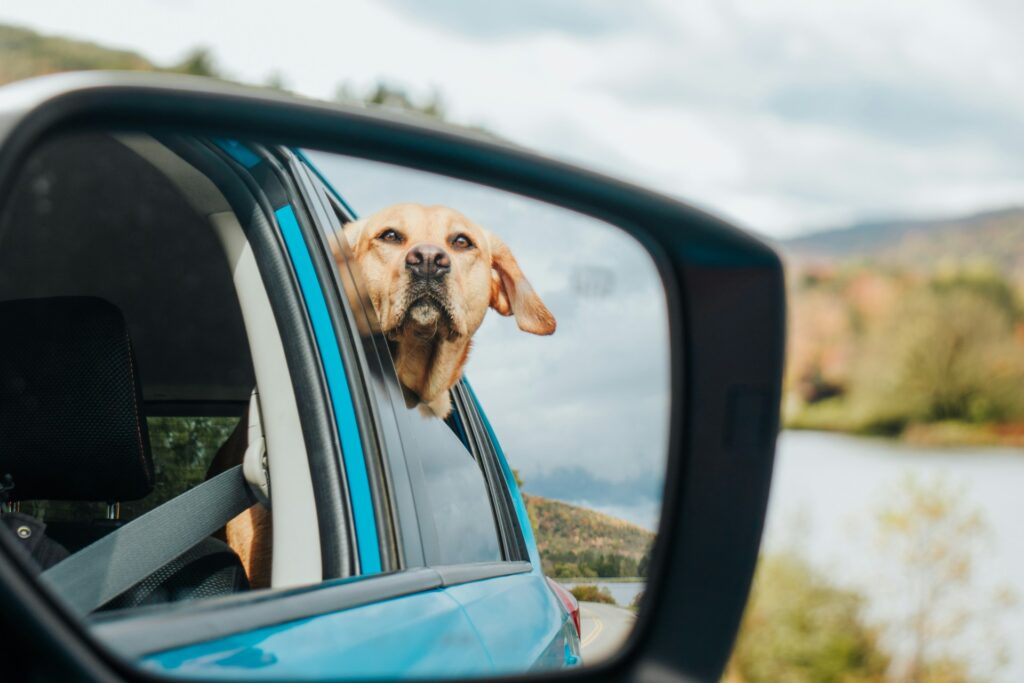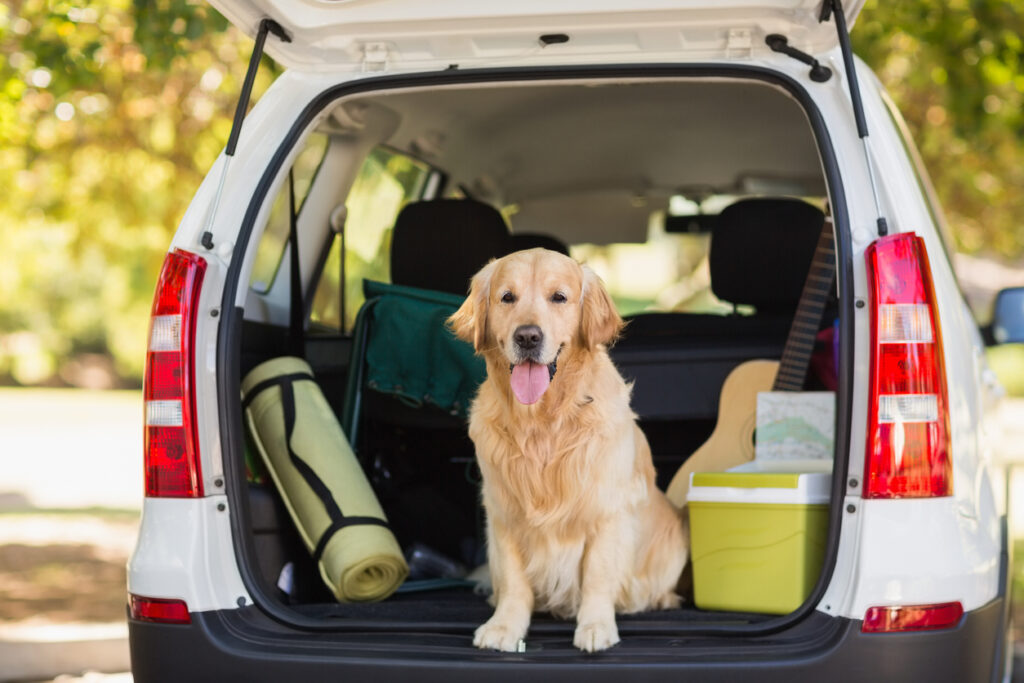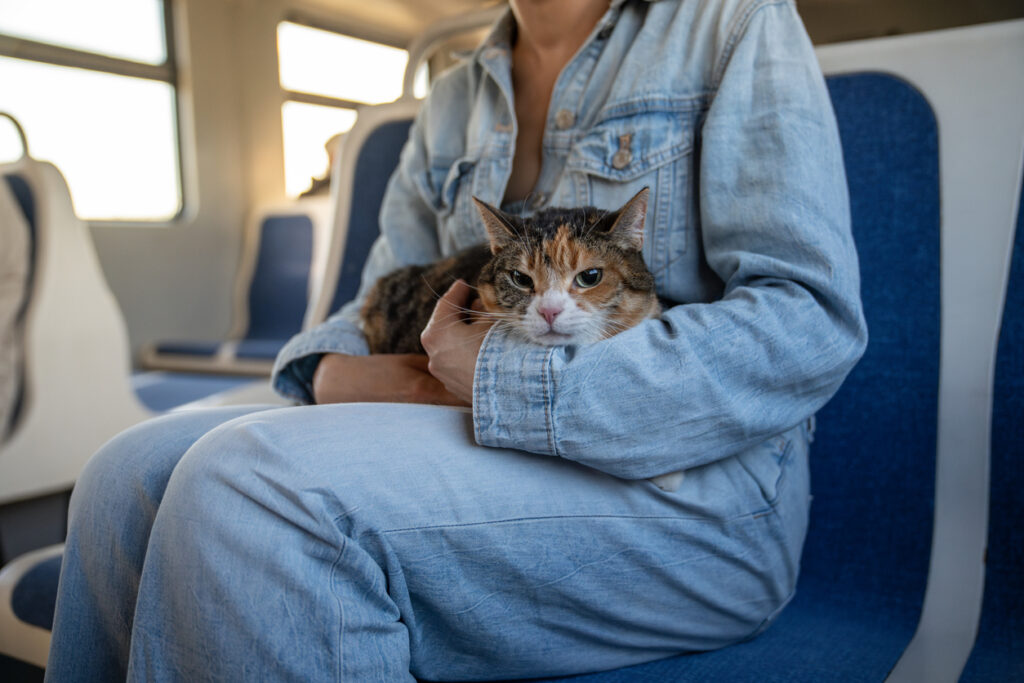
Travelling with a pet sounds sweet in theory—windows down, ears flapping in the breeze, sharing snacks at a scenic viewpoint. In reality, it can be a hot mess of tangled leads, spilled water bowls, and side-eyes from fellow travellers. Whether you’re flying, driving, or hopping on a train, here’s how to take your furry sidekick with you and still arrive in one piece mentally.
Get them used to the idea before the big day.
Don’t wait until the actual journey to introduce your pet to a travel carrier or car seat. Let them explore it ahead of time—leave it out in your living room with a favourite blanket or toy so it smells like home. A few short test drives or trial runs can go a long way. If they start to associate the carrier or car with treats and calm energy, you’ve already won half the battle before you’ve even packed.
Pack for your pet like they’re a fussy toddler.
Bring the basics, of course—food, water, bowls, lead, and waste bags—but don’t skip their emotional support items. That scruffy toy they’ve had since forever? Bring it. Their favourite chew treat? Pack two. Also think ahead: do you need calming spray, puppy pads, or travel-friendly wet wipes? If your pet’s going to throw a tantrum at 3am in a hotel, you’ll want your emergency stash ready.
Check the rules, then check them again.
Every airline, train service, and hotel seems to have its own rules about pet travel. Some welcome them with open arms. Others want paperwork, fees, or specific carriers. Don’t assume two airlines in the same country follow the same policy. Also, if you’re going abroad, some countries have quarantine periods or vaccination requirements that need sorting well in advance. Do your homework early so you’re not scrambling the week before.
Never rely on food stops to feed your pet.
You might think you’ll just feed them when you stop, but that’s a gamble, especially if you end up in a queue, stuck in traffic, or dealing with delays. Your pet doesn’t care if the services are closed or the airline meal was late. Bring snacks, just like you would for a child. Keep meals small if you’re in motion to avoid any unwanted car sickness. And always carry fresh water. Hydration beats drama.
Give them plenty of exercise before you leave.
If you’ve got a high-energy pet, try to wear them out before the journey starts. Go for a big walk, toss the ball around, or play tug-of-war. Tired pets are way more likely to snooze through a stressful trip. That doesn’t guarantee perfect behaviour, but it does cut down on the endless fidgeting, whining, and “are we there yet?” vibes from the back seat or carrier.

Don’t skip bathroom breaks, even if you’re in a rush.
It’s tempting to power through a journey when you’re behind schedule, but pets don’t work like that. They need regular breaks to stretch, sniff, pee, and decompress, just like we do (but probably with less polite timing). Plan stops in advance, especially if you’re on a long drive. And if you’re flying, give them a last-minute loo break right before security or boarding. It’s a small detail that makes a massive difference.
Keep them restrained for their safety and yours.
No matter how cute they look riding shotgun, your pet needs to be secure. A sudden brake or swerve could send them flying or cause an accident. Use a travel crate, seatbelt harness, or pet carrier designed for the journey type. Not only does this protect them, it stops them crawling under your feet or panicking unexpectedly. Bonus: it makes your insurer a lot less grumpy if anything does go wrong.

Be ready for other people’s reactions.
Some people love pets; others, not so much. Don’t expect everyone on your flight, train carriage, or ferry to be thrilled about your snoring pug or nervous tabby. Bring earplugs for other people if needed, and a bit of grace for yourself. If your pet gets loud, don’t panic. Stay calm, use treats, and be ready to apologise with a smile. Most people are understanding if you look like you’re trying your best (and not just ignoring the chaos).
Have a backup plan for emergencies.
Unexpected delays, pet sickness, or lost luggage can throw everything off. Make sure you’ve got your vet’s contact info, travel insurance that covers pets (if you’re going abroad), and an idea of the nearest animal clinic at your destination. Also, carry a paper copy of any critical documents like vaccination proof or medication needs, in case your phone dies or you’re stuck without signal. Preparedness beats panic.
Don’t forget ID—on them and in your bag.
Your pet should always wear a collar with ID tags while travelling. Microchips are great, but not everyone has a scanner. A visible tag with your mobile number can make all the difference if they get loose. Keep a recent photo of them on your phone, too (besides the 400 you already have), just in case you need to show what they look like quickly.
Let them settle at your destination before dragging them around.
Once you arrive, resist the urge to hit the sights immediately. Let your pet sniff the new place, find their bed, and get their bearings. New sounds, smells, and people can be overwhelming at first. Give them a few hours (or a day, if you can) to decompress. A settled pet means a calmer trip overall, and fewer unexpected meltdowns later.
Accept that it might not be perfect, and that’s okay.
Even with the best planning, pet travel can be messy. There might be barking, a little pee where it shouldn’t be, or an unplanned sprint through a motorway service station. The key is to stay flexible, laugh where you can, and remember: you’re doing something amazing for your pet by bringing them along. It’s chaos, but it’s shared chaos. And that counts for something.